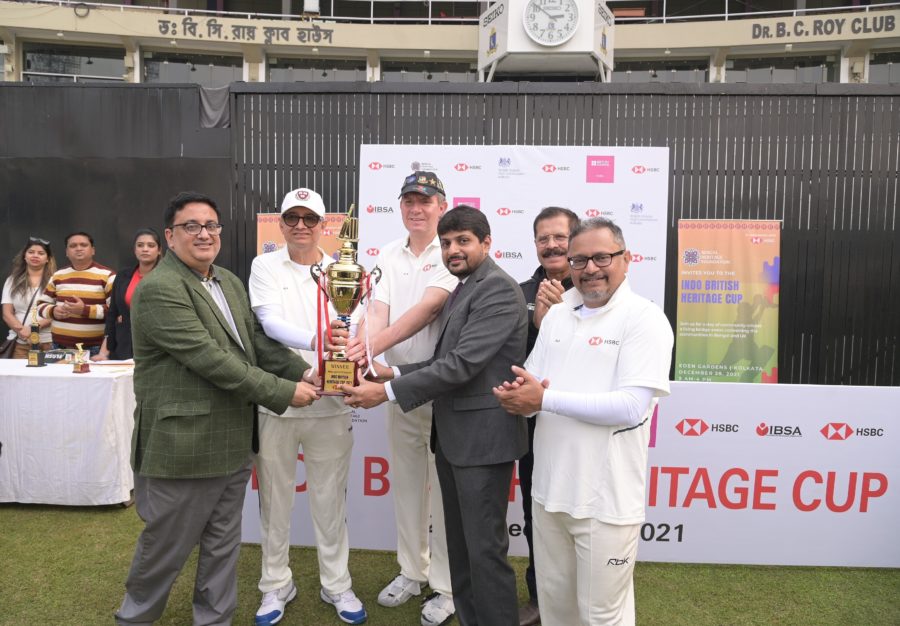‘Kuunganisha’ in the Swahili language means ‘bonding’. That’s exactly what I witnessed during the ‘Indo British Heritage Cup’ in Kolkata last month.
The international cricket match was in its second edition and organised by the London-based Bengal Heritage Foundation (BHF). BHF works closely with British Council Kolkata and the Indo-British Scholars Association (IBSA) to preserve and promote the heritage of Bengal in Britain through art, culture, education, industry, sport and tourism for the mutual benefit of both countries.
The ‘Indo British Heritage Cup’ is an initiative to deepen the links between the Indian Bengali diaspora in the UK and the British Government’s team in the ‘City of Joy’ through cricket. The first edition of the Cup was played in Kolkata in the winter of 2019. BHF again organised the 2021 match in collaboration with sponsors HSBC, British Council, British Deputy High Commission Kolkata and IBSA.
The venue of the match couldn’t have been more spectacular. The iconic Eden Gardens in Kolkata is rightly regarded as one of the three “cathedrals” of global cricket, alongside Lord’s and the Melbourne Cricket Ground. The stadium is arguably as old as the game of cricket itself. Built in 1864, Eden Gardens hosted its first Test match between India and England in 1934 and has been the scene of countless memorable matches, outstanding individual performances and records ever since. On this occasion the organisers opted for the T20 Blast format for the Indo-British Heritage Cup.
It was a battle between teams dubbed ‘UK in India’ comprising the British Deputy High Commission Kolkata and the British Council Kolkata and the defending champions ‘India in UK’, composed of members from BHF and IBSA Kolkata.
The toss went in favour of the ‘India in UK’ and they chose to bowl first. The ‘UK in India’ team batting first put up a decent 157 in 20 overs. But the score proved not to be too intimidating for the opposition who, bolstered by what might well be a world-record amount of wides from the ‘UK in India’ bowlers, cruised to a comfortable win in well under the 20 overs.
The Indian diaspora in the Britain gets to keep the Cup twice in a row.
But this was not all that happened during the day! There was much more. I did mention “living bridge” in the title, right?
The two sides joined up to ring the famous bell at Eden Gardens to get play underway. In addition, the day gave us a rare opportunity to have our kids play a mini-game on the Eden Gardens square prior to our match. It was an example of bonding with the next generation, you might say.
The rekindling of the relationship between UK in India and India in the UK after two years of COVID-enforced furlough continued during the prize distribution ceremony. Nick Low, British Deputy High Commissioner to Kolkata presented a jersey and a fabulous 3D-printed memento to Avishek Dalmiya, President of the CAB (Cricket Association of Bengal). The 3D diorama, created by Samrat Som, an alumnus of University of Arts London and combining landmarks from London and Kolkata, including the Howrah and Tower Bridges, brought a new perspective to the notion of the living bridge between our two nations!
The spectators too were part of the vibrant living bridge between UK and India. Most of them were scholars who studied in the UK and are now settled in Kolkata for work and business. The UK is an ever more attractive destination for India’s student community. The year closing September 2021 (October 2020-September 2021) saw over 90,669 student visas issued to Indians.
We expect this bonding to grow further in the coming year, through education, sports and culture. But I don’t wish the living bridge to be too strong for ‘India in UK’ to clinch the Cup for the third time in 2022. Come on – ‘UK in India’!

